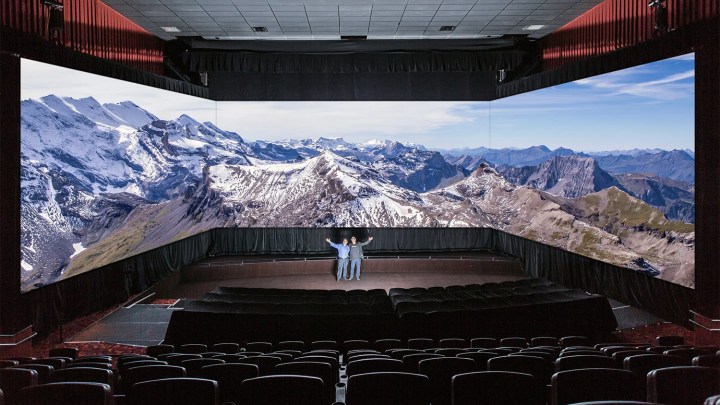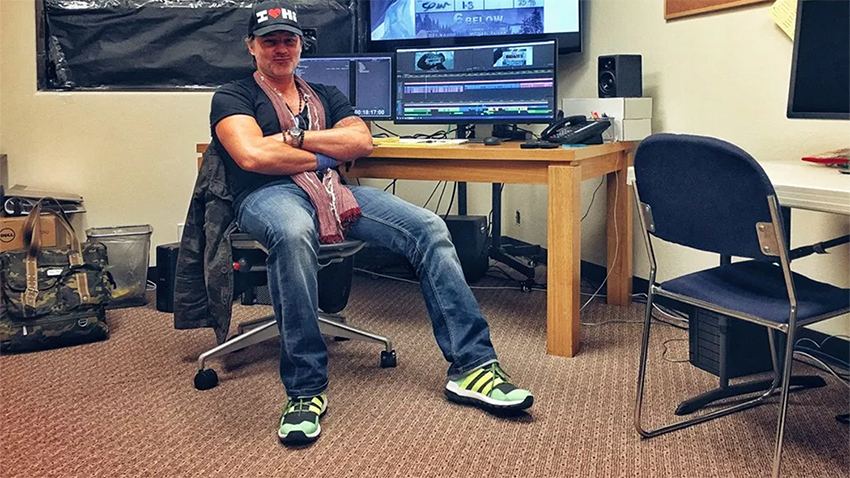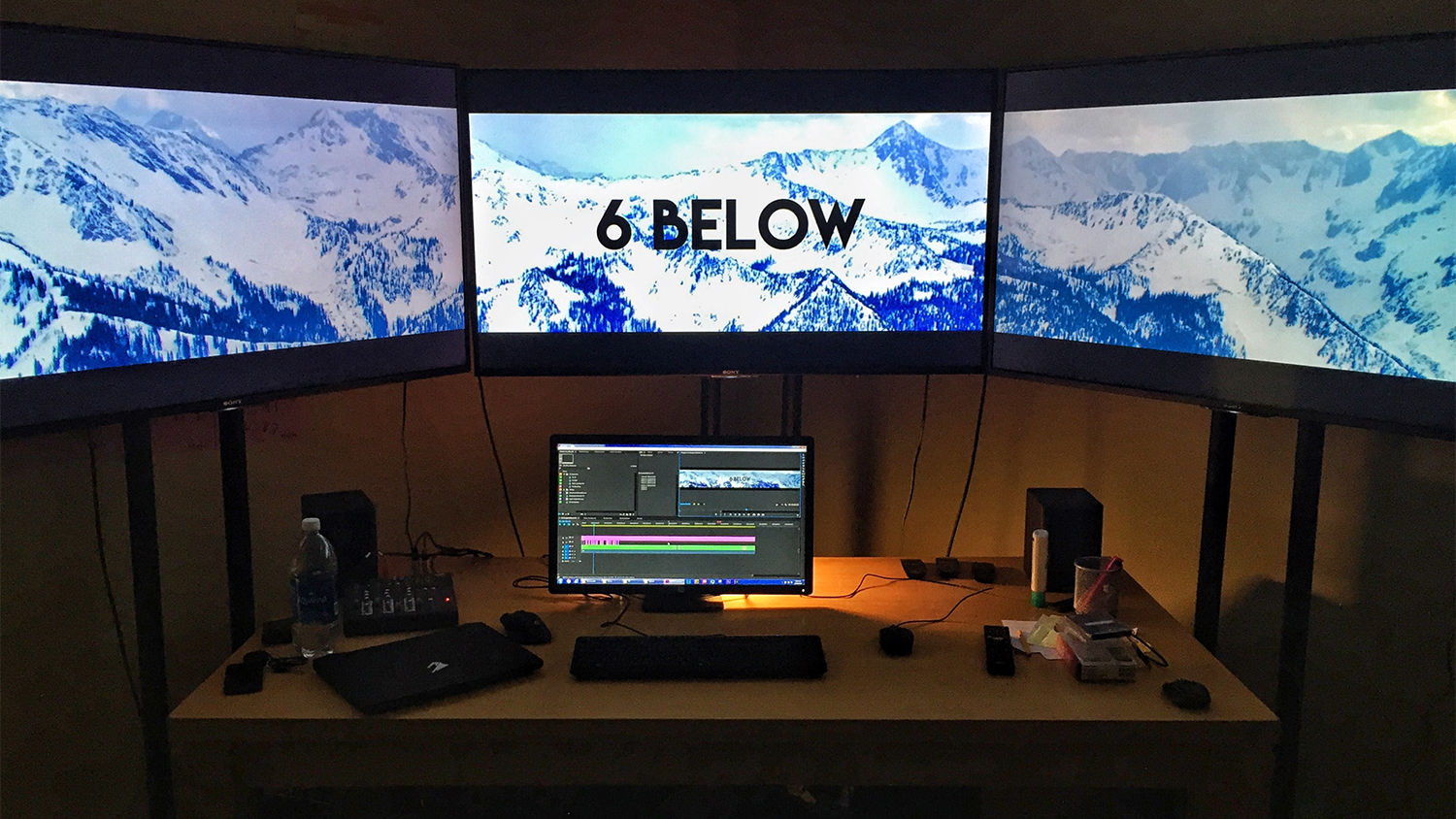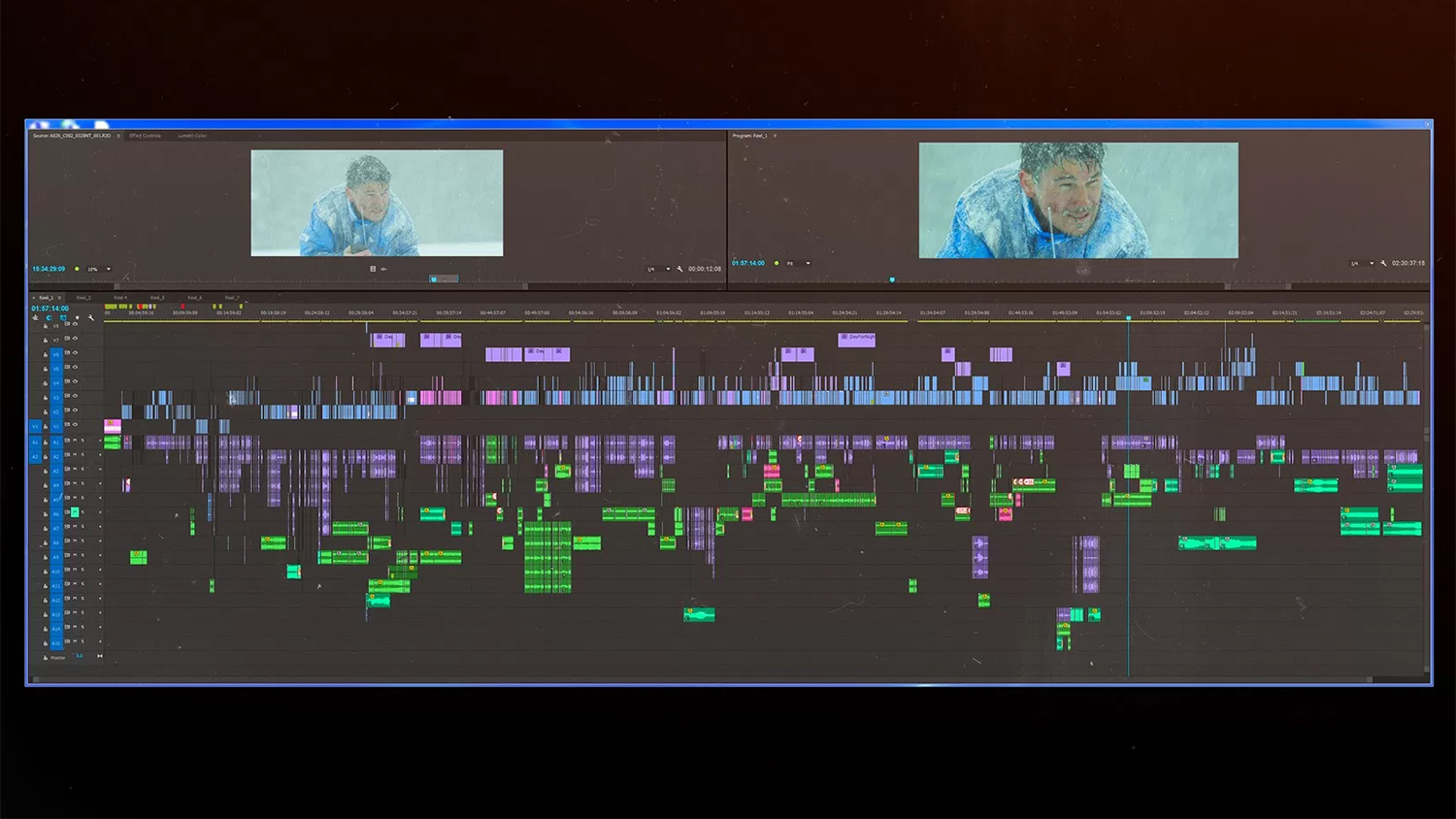
Sundance 2018
- Director Mel Jones on why her Sundance debut, Leimert Park, will make cinematic history
- Editor of Ruth Bader Ginsburg documentary on what makes her a supreme icon
- Why Season 2 of the FX hit ‘Atlanta’ is all about the dried jicama
- How ‘Clara’s Ghost’ went from Kickstarter darling to Sundance standout
That experience came about thanks to a deal J.J. Abrams’s Bad Robot signed with Barco Escape, the company behind the three-screen system, and those ultra-immersive 20 minutes were created in postproduction. In contrast is 6 Below, which starred Josh Hartnett as a snowboarder who struggles to survive after a blizzard traps him on a mountain. That film was filmed entirely in 6K, and director Scott Waugh planned on releasing it in traditional 4K and Barco versions. Editor Vashi Nedomansky was at the 2018 Sundance Film Festival, steps from where they shot to film, and explained to Digital Trends just makes the 6K format so amazing.
6 Below at 6K
“At most theaters, if you go see a movie, you’re seeing a 2K” image, Nedomansky explained. It’s usually either Digital Cinema Package (DCP), the industry standard, or a 4K image. “4K’s not twice as big as 2K. It’s four times as big. 6K is again, another huge step bigger.” Nedomansky explains, “It’s not saying resolution is better, it’s just a device for capturing all the imagery you want. It’s great because when you downscale, make it smaller, it’s really crisp and clean and retains all the inherent quality and fidelity that you would want.” 6 Below was notable, he said, because it was the first fully 6K Barco film where all three screens are on the whole time.
“It’s this massive, immersive wrap-around screen with all the content playing the whole time, and you’re in that world,” he said. But it’s really the editing process that sets it apart.
“With our post-production workflow that we created using Adobe Premiere Pro, After Effects, Photoshop, and Audition, we were able to make the first natively 6K-edited feature film in Hollywood history,” Nedomansky explained. What does that mean? The 6K camera’s files are huge, but instead of converting them to HD, they kept them as is. The problem with moving to a lower-resolution format is that “when you screen it, it’s small; it doesn’t look as clear and crisp,” he said. “Also, once you finish the film, you have to replace every shot with the original. Any effects that you did on the smaller HD shot have to be recreated on the 6K, so you’re doubling the workflow.”
The visual effects for Gone Girl and Deadpool were done at 2K, he said, then upscaled for the 4K version. “It’s almost indiscernible, it’s really good,” he said, but when they did 6 Below’s VFX at 6K, it was “even more pristine.” In time, Nedomansky thinks “editing with the native file at its normal resolution is going to be the norm if you care about saving time and money and throwing away some of the old workflows that have been around to deal with certain problems that hardware and software have overcome.” The budget for 6 Below wasn’t enormous, and if an indie could do it, a big studio should be able to as well.
Little Ned
Born in Czechoslovakia, Nedomansky moved to Canada before heading to the U.S. with his parents. “They luckily took me with them when they left,” he joked to Digital Trends. Václav Nedomanský, his father, was the first National Hockey League player to defect from a Communist country. (Vashi is in the process of making a documentary, Big Ned, about his father.) With her husband traveling to play hockey, Vashi’s mother would take her son to the movies, everything from foreign films at the Detroit Institute of Arts to Jaws to Ingmar Bergman movies. Nedomansky took it all in. “When you’re that young, you see things and it resonates,” he said.
“I started getting applause and laughs where laughs should happen, and that’s so stimulating and so validating.”
When his father received a Panasonic camera with a VHS deck for being “First Star” in a game, he gave it to Vashi to play with. With a battery life of about 30 minutes, he said, “you were judicious with what you chose to shoot.” Family holidays, trips, his sister’s swim meets — Nedomansky captured it all, but he didn’t like the way the snippets fit together. Using his home VHS player and the camcorder, he would play to the part he wanted, record it on the other machine, stop both, and fast-forward to the next part he wanted.
“Out of either sheer — call it luck or stupidity or just not knowing what I’m doing — I discovered linear and non-linear editing at the same time,” he said. He found a way to tell the stories he wanted, using a microphone to add music for a soundtrack.
In eighth grade, Nedomansky convinced a teacher to let him film a scene for his Mission: M.I.A. book report. Casting his friends and filming them running around the woods in his backyard (which were supposed to serve as the forests of Vietnam), Nedomansky cut a film to show his class. “I started getting applause and laughs where laughs should happen, and that’s so stimulating and so validating,” he said. After going to college at the University of Michigan and playing hockey professionally for 10 years, Nedomansky decided to turn his childhood passion into a full-time job.
Don’t get cocky
During his hockey career, Nedomansky wrote scripts and created his own projects but didn’t have any formal credits to his name. Though he took every job he was offered, he said being a newcomer editor was a little different than being a struggling actor or musician. “It’s one of the good parts of filmmaker — you do have to get paid,” he said. “You can’t say, ‘Here’s 20 hours of footage, cut me a nice version of it.’”
Along the way, Nedomansky said he learned how to behave professionally. “I didn’t know how to talk to other people,” he said, sometimes pushing directors or producers to see things his way. “One of the biggest signs of a good editor or craftsmen or artist is if you get return business with a director, a producer, a company,” he said. “If they say, ‘Vashi, what? Dickhead,’ that’s not good.” On the other hand, he points out, “You could be really nice, but if you’re not good at storytelling, no one cares… I’ve been very lucky, working hard at my craft and social skills.”
Now Nedomansky has an enviable list of credits, including several shorts and documentaries, as well as consulting on Deadpool and Gone Girl. On his blog, Vashi Visuals, Nedomansky gives his rules for being an editor, including “don’t get cocky when getting notes” and “don’t be an a**hole.” Both apply when building what he sees as a “sacred relationship” between editor and director. He compares it to a marriage. “There’s give and take. There’s good days. There’s bad days,” he said. “But you always have to be looking at telling that story and giving the film the best chance from both sides.” Question the director too many times and you’ll find yourself locked out of the creative process. Make the director comfortable and help them tell their story, and you may find yourself hired by them again. “That’s the biggest reward, that thy want to work with you again,” he said.
Surely you’re joking?
When we asked how he knows when he’s done editing, he said, “Two ways: When the money runs out, or they take the film away from you.” Once the deadline has passed, he said he finds himself wishing he’d had time to try something else or cut a scene here or there. “This can go on for years,” he said. Back in 2008, Nedomansky edited David Zucker’s film An American Carol. Next, Zucker had something else in mind for Vashi to edit. “He comes over with Airplane!,” Nedomansky said, referencing the 1980 classic Zucker, made with his brother Jerry and Jim Abrahams. David Zucker thought it could use a little trimming. “David, this is Airplane!” Nedomansky remembers saying. “It’s in the National Film Registry. It’s a comic classic. He’s like, ‘Yeah, but I can make it better.’
“It’s a comic classic. He’s like, ‘Yeah, but I can make it better.’”
“As an editor, I have two responses: First, you’re a maniac. You can’t edit Airplane! You can’t cut a frame, David. And second, what will other people say? ‘Vashi, you cut it? Why would you cut it? You did this, Vashi.’ No, he did it! I took the job, of course,” Nedomansky said. The version ended up about a minute shorter, with a few small gaps removed and some minor tweaks. “Using technology, like Adobe Premiere Pro, we did some time ramps and some speed ramps to make things that they couldn’t at the time play out the way they wanted,” said Nedomansky.
“He travels the country at film festivals, colleges and he shows his version of Airplane! His version is perfect. But I know next year he’ll say, ‘I found a couple more shots we can tweak.’”
Despite the pressure of editing one of the most revered comedies of all time, Nedomansky clearly enjoyed the process. We wanted to know if there were any other projects he covets. “I’m envious of, to be honest, relationships that editors have with directors,” he said, “like Michael Kahn with Stephen Spielberg, Thelma Schoonmaker with Martin Scorsese, Sally Menke with Quentin Tarantino — all my favorite movies turn out to be edited by female editors, which is awesome — but I think it’s the relationships that are fostered between collaborative people that I would be envious of. I want to find a director that I have that kind of connection. It’s not a personal task, like I want to cut this film or that film — although, Sharknado 2 was a personal task that I made sure I asked for got. Sharknado 2, arguably — no, not arguably, definitively the best of the Sharknado films. Sharknado 2, heads and tails, no pun intended, above all of them.”
This article is part of a series of reports from the 2018 Sundance Film Festival. Digital Trends was a guest of Adobe Premiere Pro during the event.






